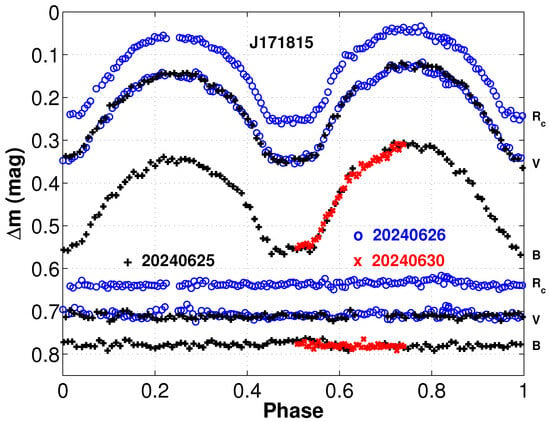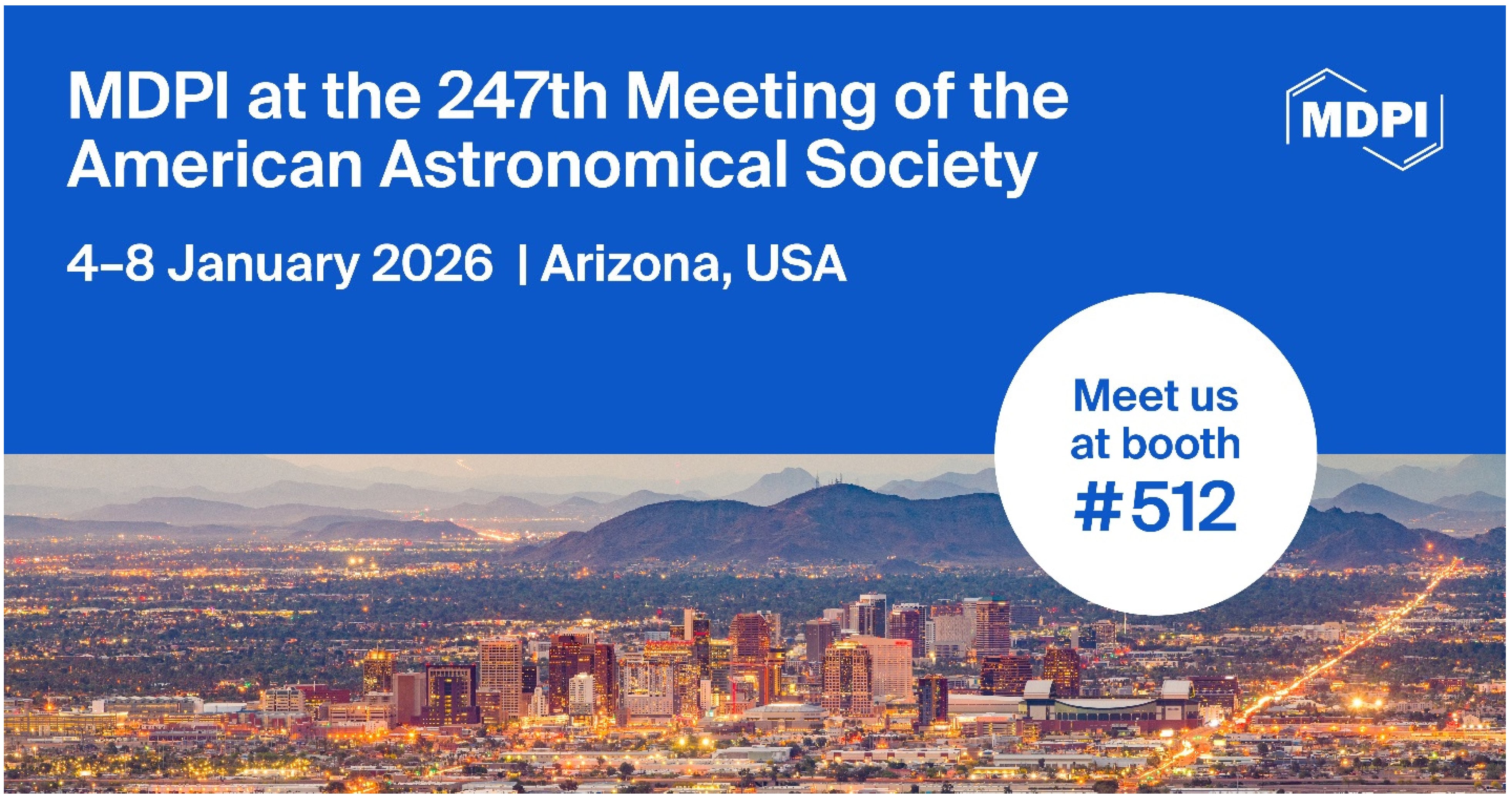Journal Description
Galaxies
Galaxies
is an international, peer-reviewed, open access journal on astronomy, astrophysics, and cosmology published bimonthly online by MDPI.
- Open Access— free for readers, with article processing charges (APC) paid by authors or their institutions.
- High Visibility: indexed within Scopus, ESCI (Web of Science), Astrophysics Data System, INSPIRE, Inspec, and other databases.
- Journal Rank: JCR - Q2 (Astronomy and Astrophysics) / CiteScore - Q2 (Astronomy and Astrophysics)
- Rapid Publication: manuscripts are peer-reviewed and a first decision is provided to authors approximately 23.4 days after submission; acceptance to publication is undertaken in 4.8 days (median values for papers published in this journal in the first half of 2025).
- Recognition of Reviewers: reviewers who provide timely, thorough peer-review reports receive vouchers entitling them to a discount on the APC of their next publication in any MDPI journal, in appreciation of the work done.
Impact Factor:
3.8 (2024);
5-Year Impact Factor:
3.1 (2024)
Latest Articles
An Extremely Low Mass Ratio Binary at the Key Stage of Evolution
Galaxies 2025, 13(6), 135; https://doi.org/10.3390/galaxies13060135 - 11 Dec 2025
Abstract
►
Show Figures
This study presents multi-band photometric observations and detailed period analysis of a totally eclipsing binary system exhibiting low photometric amplitude. The system exhibits characteristic W Ursae Majoris (EW)-type light curves with complete eclipses. In our light curve modeling, we tested two setups: one
[...] Read more.
This study presents multi-band photometric observations and detailed period analysis of a totally eclipsing binary system exhibiting low photometric amplitude. The system exhibits characteristic W Ursae Majoris (EW)-type light curves with complete eclipses. In our light curve modeling, we tested two setups: one excluding third light and the other including it as a free parameter (accounting for a potential tertiary component). Photometric analysis reveals that ASASSN-V J171815.10+450432.9 (hereafter J171815) represents a marginal contact binary system with an extreme mass ratio (the more massive component is designated as the primary star), approaching the theoretical lower limit for stable contact configurations. Furthermore, our investigation of orbital period variations uncovers a long-term period increase at a rate of
Open AccessArticle
Non-Smooth Multi-Objective Controller Synthesis for Test-Mass Actuation in Gravitational-Wave Detectors
by
Sander K. Sijtsma, Pooya Saffarieh, Nathan A. Holland, Sil T. Spanjer, Wouter B. J. Hakvoort and Conor M. Mow-Lowry
Galaxies 2025, 13(6), 134; https://doi.org/10.3390/galaxies13060134 - 9 Dec 2025
Abstract
►▼
Show Figures
This paper proposes a non-smooth controller optimization method and shows the results of ongoing research on the implementation of this method for gravitational-wave applications. Typical performance requirements concerning these type of suspensions are defined in terms of both
This paper proposes a non-smooth controller optimization method and shows the results of ongoing research on the implementation of this method for gravitational-wave applications. Typical performance requirements concerning these type of suspensions are defined in terms of both

Figure 1
Open AccessArticle
On the Analysis Dependence of DESI Dynamical Dark Energy
by
Eoin Ó Colgáin, Saeed Pourojaghi and M. M. Sheikh-Jabbari
Galaxies 2025, 13(6), 133; https://doi.org/10.3390/galaxies13060133 - 9 Dec 2025
Abstract
We continue scientific scrutiny of the DESI dynamical dark energy (DE) claim by explicitly demonstrating that the result depends on the analysis pipeline. Concretely, we define a likelihood that converts the
We continue scientific scrutiny of the DESI dynamical dark energy (DE) claim by explicitly demonstrating that the result depends on the analysis pipeline. Concretely, we define a likelihood that converts the
(This article belongs to the Special Issue Theoretical and Observational Approaches to the Hubble Tension in Cosmology)
►▼
Show Figures

Figure 1
Open AccessArticle
Normal Spiral Grand-Design Morphologies in Self-Consistent N-Body Models
by
P. A. Patsis and P. Okalidis
Galaxies 2025, 13(6), 132; https://doi.org/10.3390/galaxies13060132 - 8 Dec 2025
Abstract
►▼
Show Figures
Grand-design spiral structures typically emerge in N-body simulations of disk galaxies as barred-spiral configurations forming during the early evolutionary stages of the system. In this study, we explore the dynamical conditions that allow for the formation and sustained presence of a non-barred,
[...] Read more.
Grand-design spiral structures typically emerge in N-body simulations of disk galaxies as barred-spiral configurations forming during the early evolutionary stages of the system. In this study, we explore the dynamical conditions that allow for the formation and sustained presence of a non-barred, bisymmetric grand-design spiral pattern in fully self-consistent N-body models over considerable time periods. We present a model in which such non-barred morphologies persist for approximately 2.5 Gyr. The simulation is carried out using a standard implementation of the GADGET-3 code, incorporating both stellar and gaseous components in the disk and embedding them within a live dark matter halo. A characteristic feature of the simulation is that during its normal spiral grand-design phase the disk remains submaximal. Star formation is active throughout the model’s evolution. Analysis of the resulting morphology indicates that dominant inner, symmetric spiral arms extend between the inner Lindblad resonance (ILR) and the radial inner 4:1 resonance. This structure is evident in both the stellar and gaseous components, exhibiting extensions and bifurcations consistent with predictions from orbital theory.
Full article

Figure 1
Open AccessArticle
ASKAP Detection of the Ultra-Long Spin Period Pulsar PSR J0901-4046
by
Emil Lenc, Philip G. Edwards, Susmita Sett and Manisha Caleb
Galaxies 2025, 13(6), 131; https://doi.org/10.3390/galaxies13060131 - 1 Dec 2025
Abstract
A radio source with a period of 75.88 s, suspected of being an ultra-long period pulsar, was discovered in 2020 with the MeerKAT radio telescope. Here, we report the detection of radio pulses from this object in multi-epoch ASKAP image data at frequencies
[...] Read more.
A radio source with a period of 75.88 s, suspected of being an ultra-long period pulsar, was discovered in 2020 with the MeerKAT radio telescope. Here, we report the detection of radio pulses from this object in multi-epoch ASKAP image data at frequencies between 744 MHz and 1800 MHz and a search for pulses made in Murchison Widefield Array data at 154 MHz. The ASKAP detections pre-date and extend other published observations and so support the belief the pulsar emission has been persistent. The non-detection of the pulsar in MWA data is consistent with a recent report that the spectrum turns over at low frequencies. An ASKAP image of the field centred at 943 MHz confirms the MeerKAT detection of diffuse emission surrounding the pulsar.
Full article
(This article belongs to the Special Issue Recent Advances in Radio Astronomy)
►▼
Show Figures

Figure 1
Open AccessArticle
Predicting Galactic OH Masers from Dense Clump Properties with Neural Networks and Generalized Linear Models
by
Dmitry A. Ladeyschikov, Elena A. Filonova and Anton I. Vasyunin
Galaxies 2025, 13(6), 130; https://doi.org/10.3390/galaxies13060130 - 26 Nov 2025
Abstract
►▼
Show Figures
We develop predictive models for OH maser occurrence in Galactic star-forming regions by integrating dense-clump physical properties from the APEX Telescope Large Area Survey of the Galaxy (ATLASGAL) and Herschel Infrared Galactic Plane Survey (Hi-GAL) 360° catalogs with maser detections and non-detections compiled
[...] Read more.
We develop predictive models for OH maser occurrence in Galactic star-forming regions by integrating dense-clump physical properties from the APEX Telescope Large Area Survey of the Galaxy (ATLASGAL) and Herschel Infrared Galactic Plane Survey (Hi-GAL) 360° catalogs with maser detections and non-detections compiled in the MaserDB.net database. We compare two predictive modeling approaches for Galactic OH maser incidence: a Generalized Linear Model (GLM; logistic regression) and a compact Keras-based binary neural network (BNN). For the 1665/1667 MHz lines, both models achieve recall of 90% with a precision of approximately 50%, while for the excited-state 6031/6035 MHz lines, precision reaches roughly 20% at the same recall. We found no statistically significant difference between the BNN and GLM in out-of-sample performance. This implies that maser occurrence may be expressed as a monotonic trend without requiring nonlinear interactions. Across different catalogs and transition lines, luminosity, luminosity-to-mass ratio (

Figure 1
Open AccessArticle
Estimation of Host Galaxy Extinction for SNe Ia
by
Oleg Malkov, Alexey Sytov, Gang Zhao and Zehao Zhong
Galaxies 2025, 13(6), 129; https://doi.org/10.3390/galaxies13060129 - 25 Nov 2025
Abstract
Type Ia supernovae are used as fundamental probes of the cosmological parameters, based on a tight empirical relation between their peak luminosity and the width of their light curve. However, it has been recognized that SNe Ia are not “standard” candles, since important
[...] Read more.
Type Ia supernovae are used as fundamental probes of the cosmological parameters, based on a tight empirical relation between their peak luminosity and the width of their light curve. However, it has been recognized that SNe Ia are not “standard” candles, since important variations in their peak luminosities are observed, as a function of the metallicity, age, environment, and morphological type of the supernova hosts. The largest correction in the standardization scheme is related to extinction. While extinction in the Milky Way (MW) Galaxy is usually known and extinction between galaxies can be assumed to be zero, the value of extinction in the SN Ia host galaxy (
(This article belongs to the Special Issue Stellar Spectroscopy, Molecular Astronomy and Atomic Astronomy)
►▼
Show Figures

Figure 1
Open AccessArticle
A Morphological Identification and Study of Radio Galaxies from LoTSS DR2 II. Strange and Odd Morphology Extragalactic Radio Sources ‘STROMERSs’
by
Tapan K. Sasmal, Soumen Kumar Bera, Xuelei Chen, Yougang Wang, Soumen Mondal and Taotao Fang
Galaxies 2025, 13(6), 128; https://doi.org/10.3390/galaxies13060128 - 14 Nov 2025
Abstract
STRange and Odd Morphology Extragalactic Radio Sources (STROMERSs) is a new category of radio galaxies that shows extremely peculiar anatomy. A purely manual visual search is carried out for the identification of such interesting sources. We reported a total of 108 STROMERS sources
[...] Read more.
STRange and Odd Morphology Extragalactic Radio Sources (STROMERSs) is a new category of radio galaxies that shows extremely peculiar anatomy. A purely manual visual search is carried out for the identification of such interesting sources. We reported a total of 108 STROMERS sources from the LOFAR Two-meter Sky Survey second data release (LoTSS DR2) at 144 MHz. The host galaxies are found ∼94% of the sources. We studied the radio and optical properties of the sources. Redshifts were found in 76% of sources with known host galaxies. The redshifts of STROMERS range from 0.0015 to 1.6599 and peak at 0.15. Among the reported STROMERS sources, there are 17 giant radio galaxies (GRG) with a linear size of greater than 700 kpc. Among them, only five GRGs are new, which is a small fraction of the population of GRGs from LoTSS DR2 data. The source ILTJ164117.44 +380208.4 has the highest linear size, approximately 1.8 Mpc. To study the reasons behind these interesting morphologies, we studied the galaxy cluster environment of each candidate within a 1 Mpc search radius. We found that 53% of STROMERS candidates are associated with cluster environments with known redshifts. The source ILTJ150956.65+332642.9 is associated with a high mass galaxy cluster Abell 2034 with mass a 7.57
(This article belongs to the Special Issue Recent Advances in Radio Astronomy)
►▼
Show Figures

Figure 1
Open AccessArticle
Late-Time Radio Diagnostics of Magnetar Magnetic Burial and Reemergence in GRB Afterglows
by
Nissim Fraija, C. G. Bernal, A. Galván, B. Betancourt Kamenetskaia and M. G. Dainotti
Galaxies 2025, 13(6), 127; https://doi.org/10.3390/galaxies13060127 - 4 Nov 2025
Abstract
►▼
Show Figures
Recent centimeter-to-millimeter monitoring of nearby gamma-ray bursts (GRBs) has revealed late-time (
Recent centimeter-to-millimeter monitoring of nearby gamma-ray bursts (GRBs) has revealed late-time (

Figure 1
Open AccessArticle
Applications of the Irbene Single-Baseline Radio Interferometer
by
Ivar Shmeld, Vladislavs Bezrukovs, Jānis Šteinbergs, Karina Šķirmante, Artis Aberfelds, Sergey A. Belov, Ross A. Burns, Dmitrii Y. Kolotkov, Valery M. Nakariakov, Dmitrijs Bezrukovs, Matīss Purviņš, Aija Kalniņa, Arturs Orbidans, Marcis Bleiders and Marina Konuhova
Galaxies 2025, 13(6), 126; https://doi.org/10.3390/galaxies13060126 - 3 Nov 2025
Abstract
►▼
Show Figures
The Irbene single-baseline radio interferometer (ISBI), operated by the Ventspils International Radio Astronomy Centre (VIRAC), offers a rare and versatile configuration in modern radio astronomy. Combining the 32-m and 16-m fully steerable parabolic radio telescopes separated by an 800-m baseline, this system possesses
[...] Read more.
The Irbene single-baseline radio interferometer (ISBI), operated by the Ventspils International Radio Astronomy Centre (VIRAC), offers a rare and versatile configuration in modern radio astronomy. Combining the 32-m and 16-m fully steerable parabolic radio telescopes separated by an 800-m baseline, this system possesses a unique capability for high-sensitivity, time-domain interferometric observations. Unlike large interferometric arrays optimized for sub-arcsecond resolution imaging, the Irbene system is tailored for studies that require high temporal resolution and a strong signal-to-noise ratio. This paper reviews key scientific applications of the Irbene interferometer, including simultaneous methanol maser and radio continuum variability studies, high-cadence monitoring of quasi-periodic pulsations (QPPs) in stellar flares, ionospheric diagnostics using GNSS signals, orbit determination of navigation satellites and forward scatter radar techniques for space object detection. These diverse applications demonstrate the scientific potential of compact interferometric systems in an era dominated by large-scale observatories.
Full article

Figure 1
Open AccessArticle
Using Light Curve Derivatives to Estimate the Fill-Out Factor of Overcontact Binaries
by
Shinjirou Kouzuma
Galaxies 2025, 13(6), 125; https://doi.org/10.3390/galaxies13060125 - 31 Oct 2025
Abstract
►▼
Show Figures
We propose a simple method for estimating the fill-out factor of overcontact binary systems using the derivatives of light curves. We synthesized 74,431 sample light curves, covering the typical parameter space of overcontact binaries. On the basis of a recent study that proposed
[...] Read more.
We propose a simple method for estimating the fill-out factor of overcontact binary systems using the derivatives of light curves. We synthesized 74,431 sample light curves, covering the typical parameter space of overcontact binaries. On the basis of a recent study that proposed a new classification scheme using light curve derivatives up to the fourth order, the sample light curves were classified. Among the classified types, for systems exhibiting high mass ratios and high inclinations (i.e., SPf type), we found that the fill-out factor has a strong correlation with the time interval between two local extrema in the third derivatives of their light curves. An empirical formula to estimate the fill-out factor was derived using regression analysis for the identified correlation. Application to real overcontact binary data demonstrated that the proposed method is practical for obtaining reliable estimates of the fill-out factor and its associated uncertainties.
Full article

Figure 1
Open AccessArticle
Reinforcement Learning-Driven Framework for High-Precision Target Tracking in Radio Astronomy
by
Tanawit Sahavisit, Popphon Laon, Supavee Pourbunthidkul, Pattharin Wichittrakarn, Pattarapong Phasukkit and Nongluck Houngkamhang
Galaxies 2025, 13(6), 124; https://doi.org/10.3390/galaxies13060124 - 31 Oct 2025
Abstract
Radio astronomy requires precise target localization and tracking to ensure accurate observations. Conventional regulation methodologies, encompassing PID controllers, frequently encounter difficulties due to orientation inaccuracies precipitated by mechanical limitations, environmental fluctuations, and electromagnetic interferences. To tackle these obstacles, this investigation presents a reinforcement
[...] Read more.
Radio astronomy requires precise target localization and tracking to ensure accurate observations. Conventional regulation methodologies, encompassing PID controllers, frequently encounter difficulties due to orientation inaccuracies precipitated by mechanical limitations, environmental fluctuations, and electromagnetic interferences. To tackle these obstacles, this investigation presents a reinforcement learning (RL)-oriented framework for high-accuracy monitoring in radio telescopes. The suggested system amalgamates a localization control module, a receiver, and an RL tracking agent that functions in scanning and tracking stages. The agent optimizes its policy by maximizing the signal-to-noise ratio (SNR), a critical factor in astronomical measurements. The framework employs a reconditioned 12-m radio telescope at King Mongkut’s Institute of Technology Ladkrabang (KMITL), originally constructed as a satellite earth station antenna for telecommunications and was subsequently refurbished and adapted for radio astronomy research. It incorporates dual-axis servo regulation and high-definition encoders. Real-time SNR data and streaming are supported by a HamGeek ZedBoard with an AD9361 software-defined radio (SDR). The RL agent leverages the Proximal Policy Optimization (PPO) algorithm with a self-attention actor–critic model, while hyperparameters are tuned via Optuna. Experimental results indicate strong performance, successfully maintaining stable tracking of randomly moving, non-patterned targets for over 4 continuous hours without any external tracking assistance, while achieving an SNR improvement of up to 23.5% compared with programmed TLE-based tracking during live satellite experiments with Thaicom-4. The simplicity of the framework, combined with its adaptability and ability to learn directly from environmental feedback, highlights its suitability for next-generation astronomical techniques in radio telescope surveys, radio line observations, and time-domain astronomy. These findings underscore RL’s potential to enhance telescope tracking accuracy and scalability while reducing control system complexity for dynamic astronomical applications.
Full article
(This article belongs to the Special Issue Recent Advances in Radio Astronomy)
►▼
Show Figures

Graphical abstract
Open AccessReview
Radio Astronomy with NASA’s Deep Space Network
by
T. Joseph W. Lazio and Stephen M. Lichten
Galaxies 2025, 13(6), 123; https://doi.org/10.3390/galaxies13060123 - 31 Oct 2025
Abstract
The Deep Space Network (DSN) is the spacecraft tracking and communication infrastructure for NASA’s deep space missions. At three sites, approximately equally separated in (terrestrial) longitude, there are multiple radio antennas outfitted with cryogenic microwave receiving systems both for receiving transmissions from deep
[...] Read more.
The Deep Space Network (DSN) is the spacecraft tracking and communication infrastructure for NASA’s deep space missions. At three sites, approximately equally separated in (terrestrial) longitude, there are multiple radio antennas outfitted with cryogenic microwave receiving systems both for receiving transmissions from deep space spacecraft and for conducting radio astronomical observations, particularly in the L band (1350 MHz–1800 MHz), X band (8200 MHz–8600 MHz), and K band (18 GHz–27 GHz). In particular, the 70 m antennas at the Canberra and Madrid DSN Complexes are well-equipped to participate in international very long baseline interferometry (VLBI) observations. Over the past five years, there has been an effort to refurbish and modernize equipment such as receiving and signal transport systems for radio astronomical observations. We summarize current capabilities, on-going refurbishment activities, and possible future opportunities.
Full article
(This article belongs to the Special Issue Recent Advances in Radio Astronomy)
►▼
Show Figures
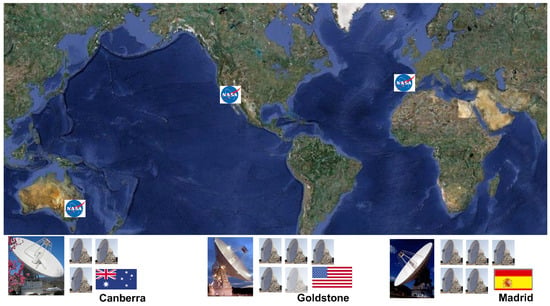
Figure 1
Open AccessArticle
A Century of Studies of the Object with the B[e] Phenomenon HD 50138
by
Holly Buroughs, Anatoly S. Miroshnichenko, Steve Danford, Alicia N. Aarnio, Sergei V. Zharikov, Hans Van Winckel, Nadine Manset, Ashish Raj, Stephen Drew Chojnowski, Gregor Rauw and Azamat A. Khokhlov
Galaxies 2025, 13(6), 122; https://doi.org/10.3390/galaxies13060122 - 30 Oct 2025
Abstract
►▼
Show Figures
HD 50138 is a 6.6 mag emission-line B–type star, whose nature is still controversial. It has been thought to be a pre-main-sequence Herbig Be star and an evolved object with the B[e] phenomenon, possibly a mass-transferring binary system. However, it has mostly been
[...] Read more.
HD 50138 is a 6.6 mag emission-line B–type star, whose nature is still controversial. It has been thought to be a pre-main-sequence Herbig Be star and an evolved object with the B[e] phenomenon, possibly a mass-transferring binary system. However, it has mostly been studied on short timescales. We collected ∼1000 medium- and high-resolution spectra and available optical photometric data, which cover a time frame from 1981 to 2025, and extended the study from emission lines to a range of absorption lines. A few episodes of dramatic emission-line strength variations were uncovered as well as fast variations of the absorption line widths on timescales of several days. We also found a few previously unreported fadings of the star’s optical brightness seemingly associated with the Hα line profile changes. At the same time, it is still unclear whether the object is a single star or a binary system, as no regular variations of its observed parameters have been detected.
Full article

Figure 1
Open AccessArticle
EZ Lyn: A Confirmed Period-Bouncer Cataclysmic Variable Below the Period Minimum
by
Nadezhda L. Vaidman, Almansur T. Agishev, Serik A. Khokhlov and Aldiyar T. Agishev
Galaxies 2025, 13(6), 121; https://doi.org/10.3390/galaxies13060121 - 30 Oct 2025
Abstract
►▼
Show Figures
We model the short-period cataclysmic variable EZ Lyn with MESA binary evolution and infer its present-day parameters through a staged statistical search. First, we compute a coarse grid of tracks in
We model the short-period cataclysmic variable EZ Lyn with MESA binary evolution and infer its present-day parameters through a staged statistical search. First, we compute a coarse grid of tracks in
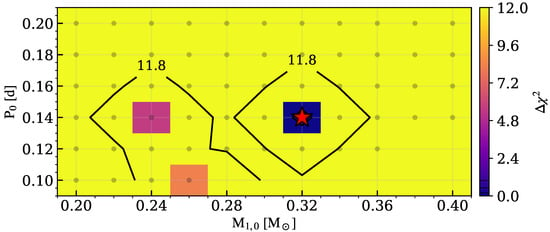
Figure 1
Open AccessArticle
VERA’s 20 yr Evolution in Science and Technology
by
Mareki Honma, Tomoya Hirota, Tomoaki Oyama and Akiharu Nakagawa
Galaxies 2025, 13(6), 120; https://doi.org/10.3390/galaxies13060120 - 27 Oct 2025
Abstract
We review the past 20 yr evolution of VERA (VLBI Exploration of Radio Astrometry) in both science and techinology. VERA is a VLBI array in Japan which consists of four 20 m-diameter telescopes, originally dedicated to phase-referencing VLBI astrometry. Its main observing bands
[...] Read more.
We review the past 20 yr evolution of VERA (VLBI Exploration of Radio Astrometry) in both science and techinology. VERA is a VLBI array in Japan which consists of four 20 m-diameter telescopes, originally dedicated to phase-referencing VLBI astrometry. Its main observing bands are K (22 GHz) and Q (43 GHz) for conducting astrometry observations of H2O and SiO maser sources. In its 20 yr history, VERA has conducted astrometry observations of ∼100 maser sources, revealing the three-dimensional structure of the Milky Way Galaxy. Its long-term observations of Sgr A* resulted in the first parallax detection of the super-massive black hole at the Galaxy center. Observations of maser sources also revealed physical properties of star-forming regions and provided calibration of AGB stars’ distances and their Period–Luminosity relation. In parallel, several upgrades have been carried out in receivers as well as digital back-ends and correlator to extend the frequency bands and the data rate.
Full article
(This article belongs to the Special Issue Recent Advances in Radio Astronomy)
►▼
Show Figures
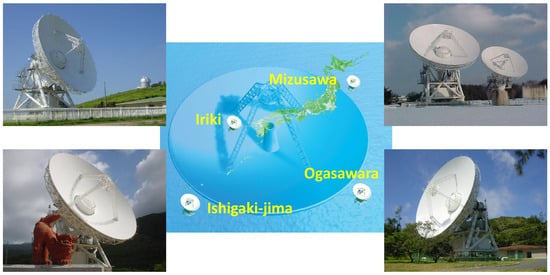
Figure 1
Open AccessArticle
Natural Constants Determined to High Precision from Boltzmann’s Constant and Avogadro’s Number—A Challengeto Experiments and Astrophysical Observations to Match the Precision of the Results
by
Dimitris M. Christodoulou, Demosthenes Kazanas and Silas G. T. Laycock
Galaxies 2025, 13(6), 119; https://doi.org/10.3390/galaxies13060119 - 27 Oct 2025
Abstract
In this investigation, we explore previously unknown relations between natural constants by taking the following steps: (1) We discard Dirac’s constant ℏ from the universal man-made constants of physics, which we redefine in terms of Planck’s constant h. (2) Working in the
[...] Read more.
In this investigation, we explore previously unknown relations between natural constants by taking the following steps: (1) We discard Dirac’s constant ℏ from the universal man-made constants of physics, which we redefine in terms of Planck’s constant h. (2) Working in the SI system of units, we determine Newton’s gravitational constant G from Boltzmann’s constant
(This article belongs to the Collection A Trip across the Universe: Our Present Knowledge and Future Perspectives)
Open AccessArticle
The Physical and Mathematical Meaning of Temperature and Its Implications for Astronomy
by
Robert E. Criss and Anne M. Hofmeister
Galaxies 2025, 13(6), 118; https://doi.org/10.3390/galaxies13060118 - 24 Oct 2025
Abstract
Temperatures reported for astronomical objects are commonly extreme, and all are ascertained indirectly, using spectroscopy. However, narrow spectral peaks record microscopic behavior (transitions), whereas temperature is a macroscopic (bulk) feature of an object. Using macroscopic theories of heat, light, and their transport, we
[...] Read more.
Temperatures reported for astronomical objects are commonly extreme, and all are ascertained indirectly, using spectroscopy. However, narrow spectral peaks record microscopic behavior (transitions), whereas temperature is a macroscopic (bulk) feature of an object. Using macroscopic theories of heat, light, and their transport, we show that temperature is best defined in terms of the radiant flux of an object (Stefan–Boltzmann law)—including that from large gas bodies—because this flux defines which objects are hotter or colder, and because relevance to mathematical order is the essential attribute of any measurable quantity. Laboratory examples further show that spectroscopic determinations of temperature require the following: (1) use of a large spectral range relevant to that temperature; (2) observation of the unique peak shape characteristic of thermal emissions; (3) accounting for reflections at surfaces; and, most importantly, (4) that conditions are optically thick, a condition fostered by large object size and high temperatures. Temperature of monatomic gas is accurately described by classical kinetic theory because molecular translations are unaffected by electron dynamics. Inelastic molecular collisions provide continuous thermal emissions under optically thick conditions attained in immense astronomical environments. We show how thermal and non-thermal spectroscopic features can be distinguished. Our findings are applied to star-forming regions, intergalactic media, lightning, the Sun’s surface and the corona. Our results resolve long-standing problems regarding heat sources.
Full article
(This article belongs to the Special Issue Alternative Interpretations of Observed Galactic Behaviors)
►▼
Show Figures

Figure 1
Open AccessReview
Dwarf Galaxies in Focus: A Survey of Observational and Theoretical Studies
by
Komiljon Tillaboev, Ikram Tadjibaev, Kamolidin Mamadaliyev, Dildor Otajonova, Malokhat Atajonova and Bagzodbek Abdullayev
Galaxies 2025, 13(5), 117; https://doi.org/10.3390/galaxies13050117 - 21 Oct 2025
Abstract
►▼
Show Figures
This paper presents provides a comprehensive survey of dwarf galaxies, which represent the most numerous and diverse systems in the Universe. We discuss their definitions and morphological classifications, emphasizing the unique properties that distinguish them from globular clusters and giant galaxies. Special attention
[...] Read more.
This paper presents provides a comprehensive survey of dwarf galaxies, which represent the most numerous and diverse systems in the Universe. We discuss their definitions and morphological classifications, emphasizing the unique properties that distinguish them from globular clusters and giant galaxies. Special attention is given to their formation and evolutionary processes in the framework of hierarchical structure formation and ΛCDM cosmology, including the role of environmental mechanisms and stellar feedback. Star formation histories are explored based on observations and simulations, highlighting both bursty and extended activity across different dwarf types. We further examine the crucial role of dark matter in shaping the dynamics and structure of dwarf galaxies, as well as the core–cusp and missing satellites problems. Finally, we summarize insights from numerical simulations and theoretical models, which provide a bridge between observations and cosmological predictions. This synthesis demonstrates that dwarf galaxies remain essential laboratories for testing galaxy formation theories and probing the nature of dark matter.
Full article

Figure 1
Open AccessArticle
Stark Broadening of O I Spectral Lines
by
Milan S. Dimitrijević and Sylvie Sahal-Bréchot
Galaxies 2025, 13(5), 116; https://doi.org/10.3390/galaxies13050116 - 15 Oct 2025
Abstract
We do not know a priori chemical composition of a star. However, with more high resolution spectra becoming more abundant thanks to the development of space-born observations, atomic data including Stark broadening parameters for various spectral lines for elements in various ionisation stages
[...] Read more.
We do not know a priori chemical composition of a star. However, with more high resolution spectra becoming more abundant thanks to the development of space-born observations, atomic data including Stark broadening parameters for various spectral lines for elements in various ionisation stages are becoming more feasible. Particularly are important spectral lines of C-N-O peak in the distribution of abundances of chemical elements. For the calculation of Stark broadening parameters, spectral line full widths at half intensity maximum (FWHM) and shifts, we used semiclassical perturbation method. As the result, Stark widths and shifts for 36 spectral lines of neutral oxygen, broadened by the collisions with electrons, protons and helium ions, have been obtained and compared with other theoretical calculations. These data are of interest for a number of problems in astrophysics, plasma physics, as well as for inertial fusion and various plasmas in technology.
Full article
(This article belongs to the Special Issue Stellar Spectroscopy, Molecular Astronomy and Atomic Astronomy)

Journal Menu
► ▼ Journal Menu-
- Galaxies Home
- Aims & Scope
- Editorial Board
- Reviewer Board
- Topical Advisory Panel
- Instructions for Authors
- Special Issues
- Topics
- Topical Collections
- Article Processing Charge
- Indexing & Archiving
- Editor’s Choice Articles
- Most Cited & Viewed
- Journal Statistics
- Journal History
- Journal Awards
- Conferences
- Editorial Office
Journal Browser
► ▼ Journal BrowserHighly Accessed Articles
Latest Books
E-Mail Alert
News
Topics
Topic in
Symmetry, Galaxies, Universe, Particles, Astronomy
Dark Matter, Dark Energy and Cosmological Anisotropy
Topic Editors: Kazuharu Bamba, Panayiotis Stavrinos, Ivan De MartinoDeadline: 31 December 2026

Conferences
Special Issues
Special Issue in
Galaxies
Neutron Capture Processes in the Universe
Guest Editors: Sergio Cristallo, Luciano Piersanti, Diego VescoviDeadline: 30 January 2026
Special Issue in
Galaxies
Multiwavelength Variability and Unstable Processes in High-Energy-Peaked BL Lacertae Objects
Guest Editors: Bidzina Kapanadze, Stefano VercelloneDeadline: 31 January 2026
Special Issue in
Galaxies
Theoretical and Observational Approaches to the Hubble Tension in Cosmology
Guest Editors: Indranil Banik, Harry DesmondDeadline: 31 January 2026
Special Issue in
Galaxies
Physics of Black Hole Spins
Guest Editors: George Wong, Alejandro Cárdenas-Avendaño, Delilah Gates, Javier GarciaDeadline: 2 February 2026
Topical Collections
Topical Collection in
Galaxies
A Trip across the Universe: Our Present Knowledge and Future Perspectives
Collection Editor: Emilio Elizalde




